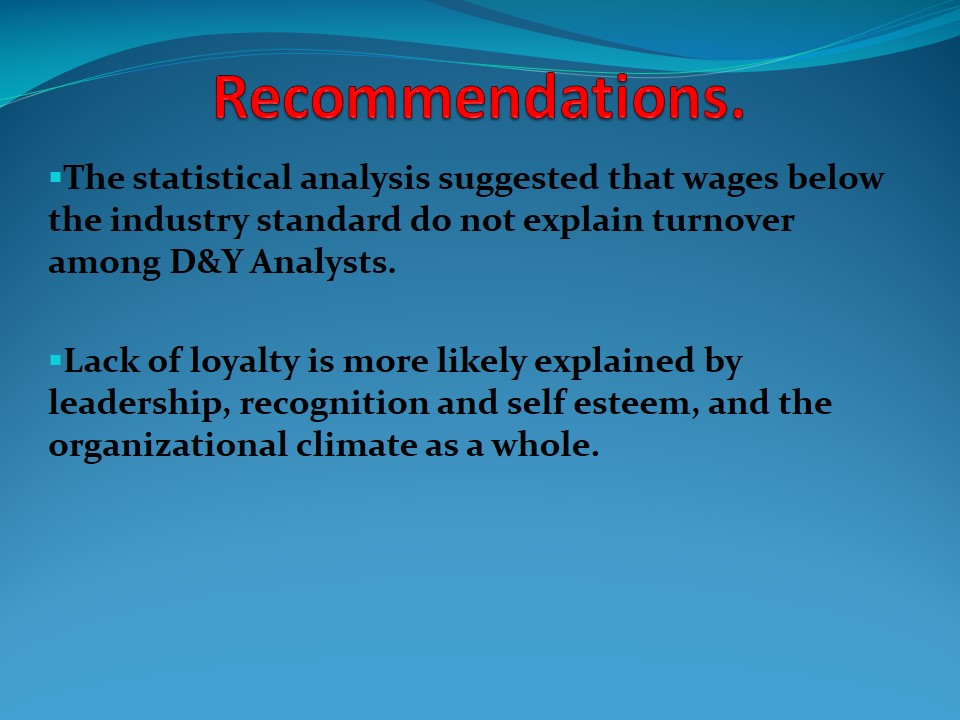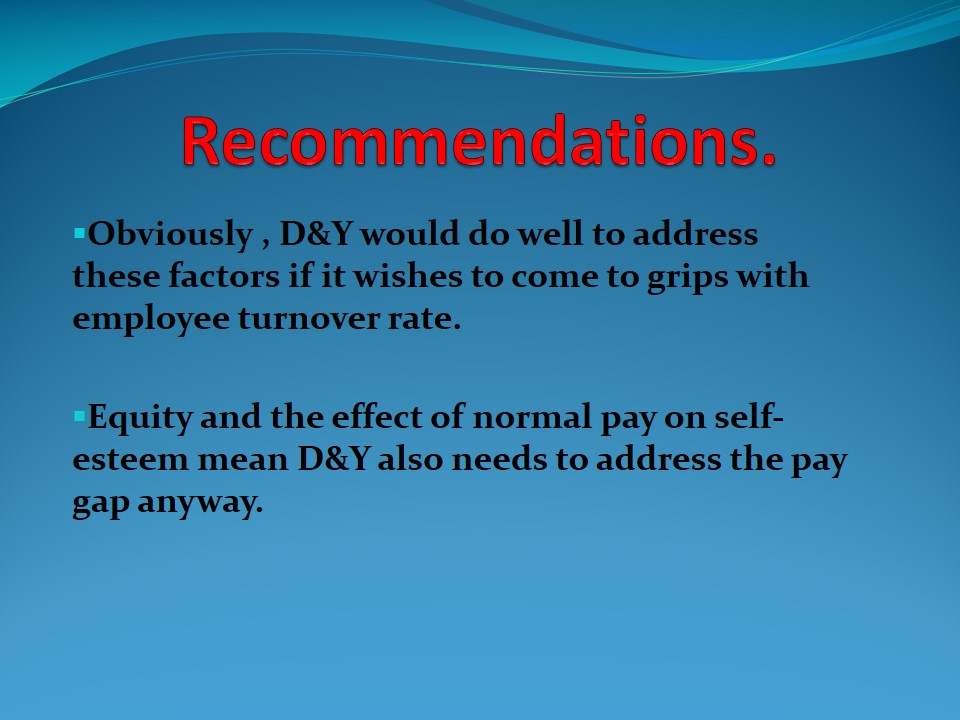Introduction
- People work for money
- Because, following the hierarchy of needs, human beings must first of all be able to satisfy physiological needs for food, shelter, clothing and mobility.
- Money also buys status, group belongingness, a degree of security and love (Remember the last time you shopped for the love of your life?)
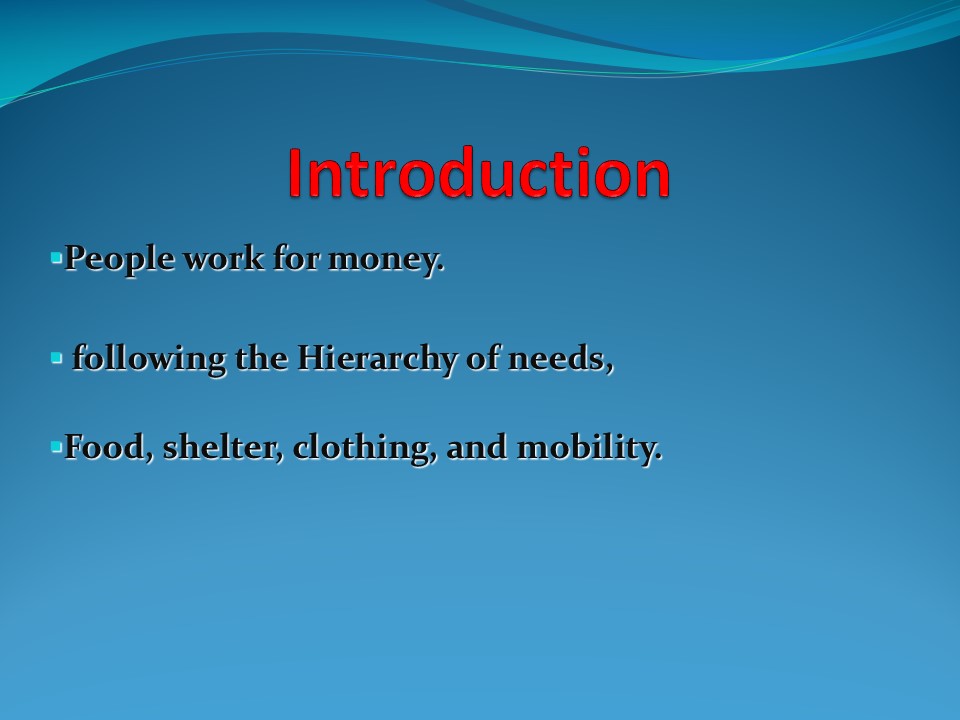
Descriptives on Starting Salaries
- Regardless of whether they stay or not, systems analysts typically receive starting wages of just $ 37,986.36.
- This is 15% lower than the aforementioned industry benchmark.
- Just one in six Systems Analysts at D&Y receive starting pay ≥$40,000.
- And yet, nearly half stayed three or more years.
Contrary to the intuitive understanding about the relationship between pay and loyalty, Figure 1 suggests that quite the reverse is true.
Hypothesis Test versus Industry-Standard Salaries
A one-tailed t-test was performed owing to the nature of the question asked, “Is D&Y offering less than the industry standard of $40K to the employees that don’t stay for at least 3 years?” Given mean starting pay of $ 38,555.88 for those who had left before they had been with D&Y for three years, variance of 3,561,328, n = 34, and a null hypothesis of there being no difference at all versus the population mean of $40,000., one derives a t statistic of -4.46, p < 0.00071, and tCRIT of 1.69.
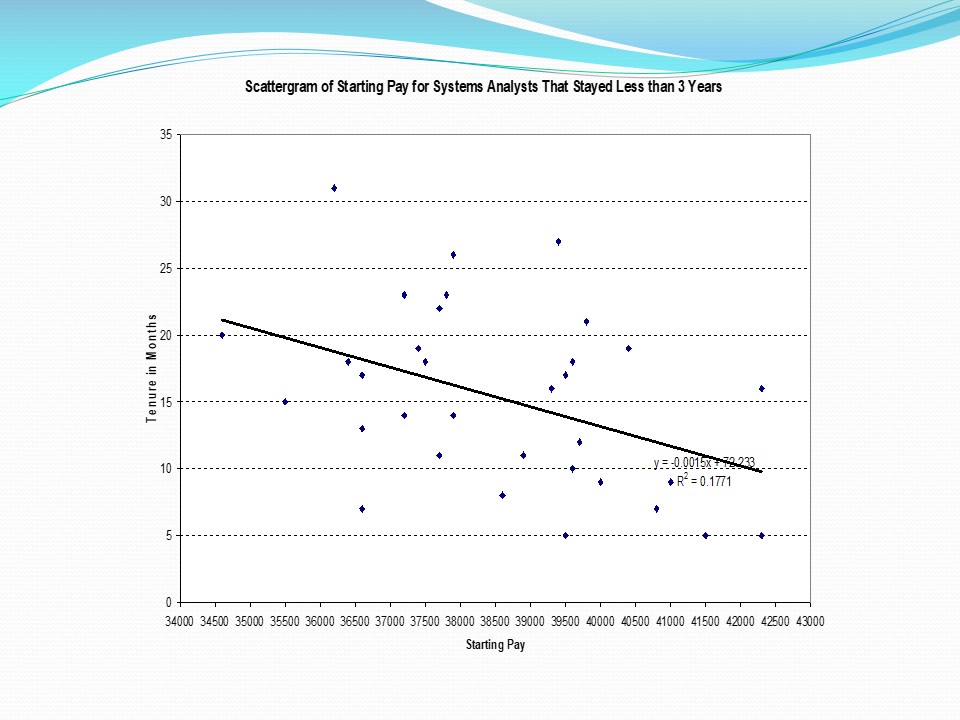
The Relationship Between the Two Variables
- There seems to be inverse relationship between length of stay and pay.
- Those who are paid less stay longer.
- Assuming starting pay is based on merit, one may theorize that those given lower salary to start with are not as attractive to employers who poach.
- We see from the computed r2 value of the trend line that salary explains just 17.7% of the variance.
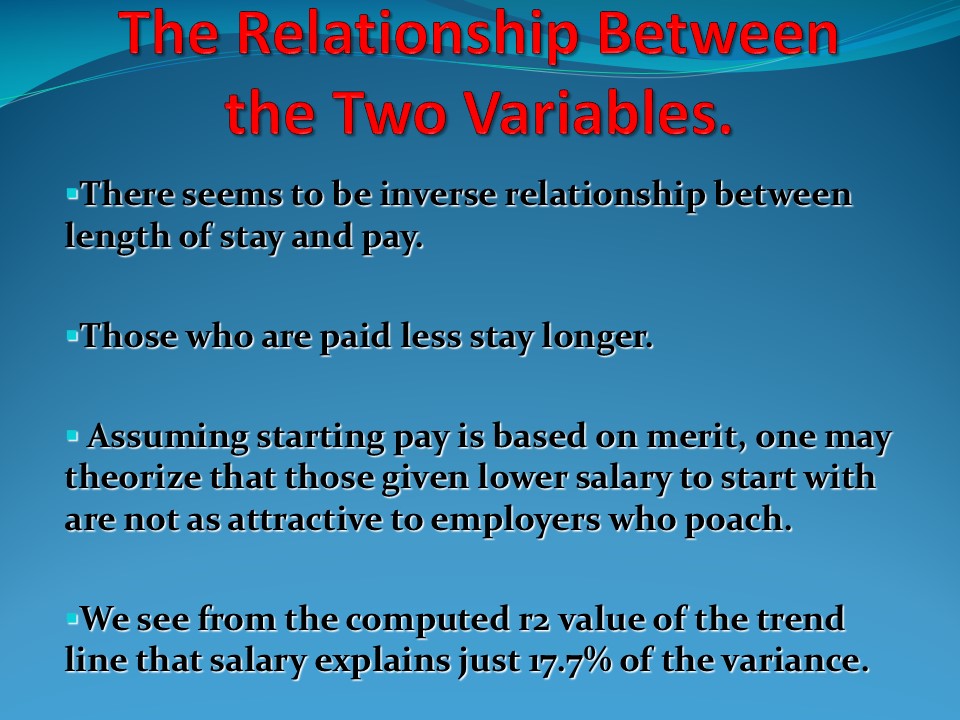
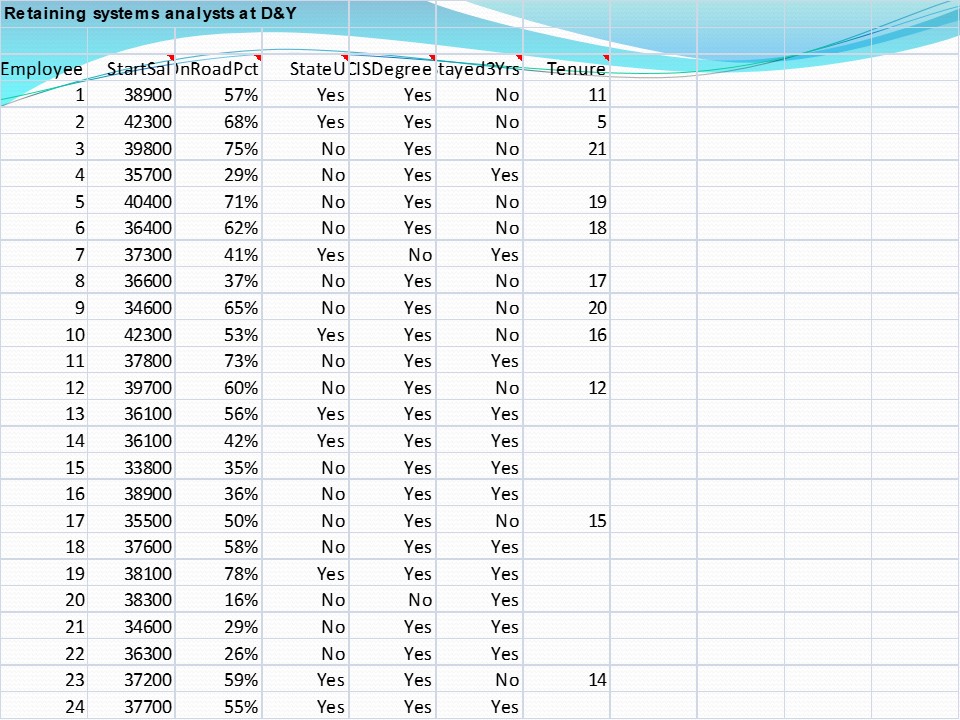
The Situation at D&Y
- System analysts typically receive starting wages of just 37,986.63.
- This is 15% lower of the 40,000.
- Just one in six Systems Analysts at D&Y receive starting pay of 40,000.
- Nearly half have stayed three or more years.
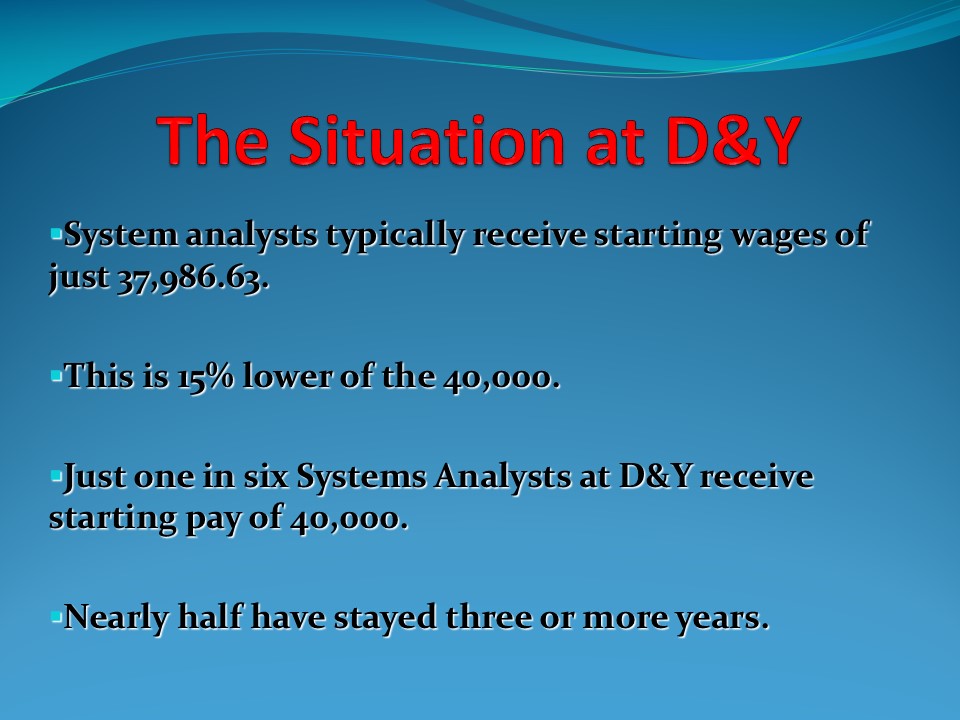
The Hypothesis Test
Is D&Y offering less than the industry standard of $40K to the employees that don’t stay for at least 3 years?
- Number of employees in the D&Y= 66.
- People who left = 34.
- The average salary for each one = 38,555.88.
- The variance between people who left and stayed = 3,561,328.
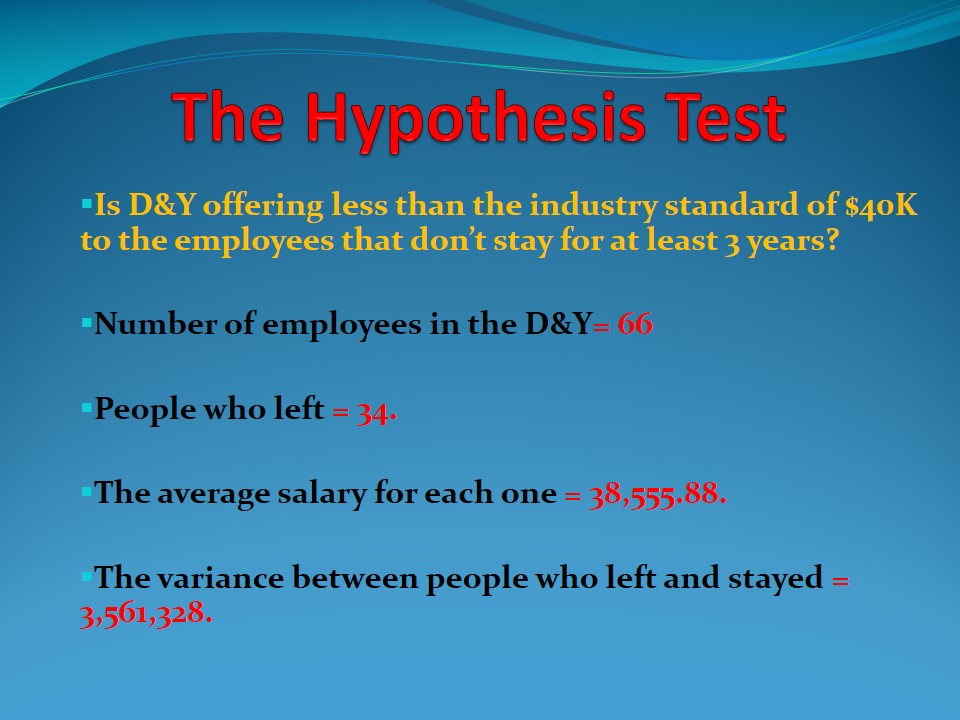
Rationale for the One-Tailed T-Test
- Assigns all alpha to testing the statistical significance in the one direction of interest.
- Tests for the probability of the relationship in one direction.
- Ignores the other direction of the normal curve.
- H0 : X bar = μ.
- H0 : There is no difference between the industry standard of $40,000 and the average $38,555 salary of Systems Analysts who leave before three years are up.
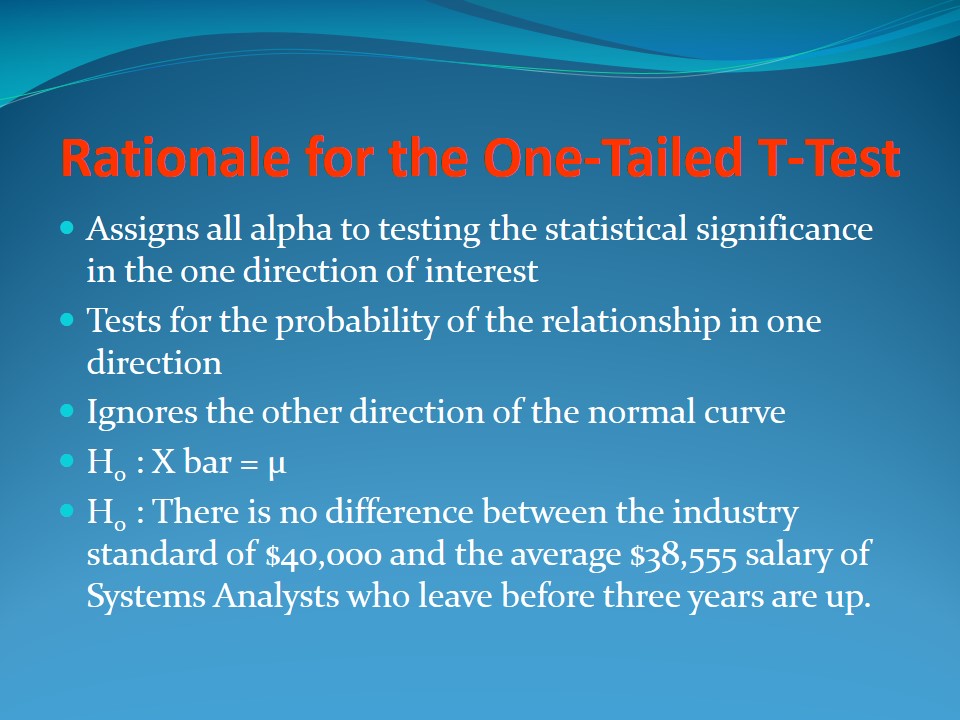
The Significance Test Visualized
- Only the probability that X bar is significantly lower than μ is being tested.
- Critical p value 0.05.
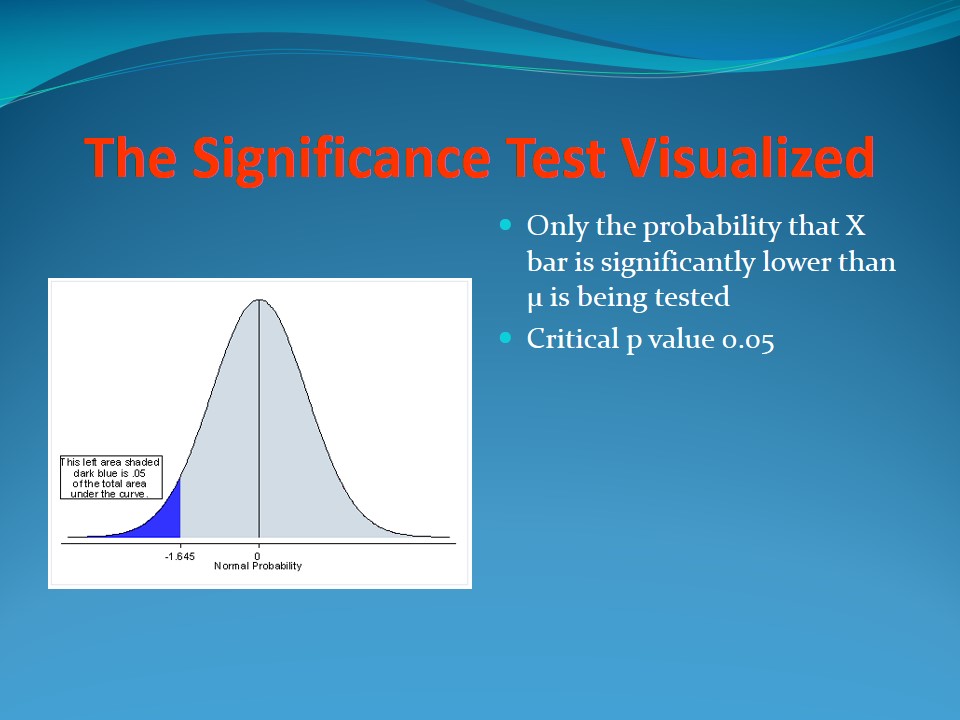
Calculate T Value
- Reject H0 if ($40,000 – 38,556)/(s/√n) is larger than can be explained by sampling error at α = 0.05.
- Since standard deviation = s/√n = 1,887.15…
- Calculated Z value = 0.76.
- Z = 0.76 < 1.96 required at α = 0.05.
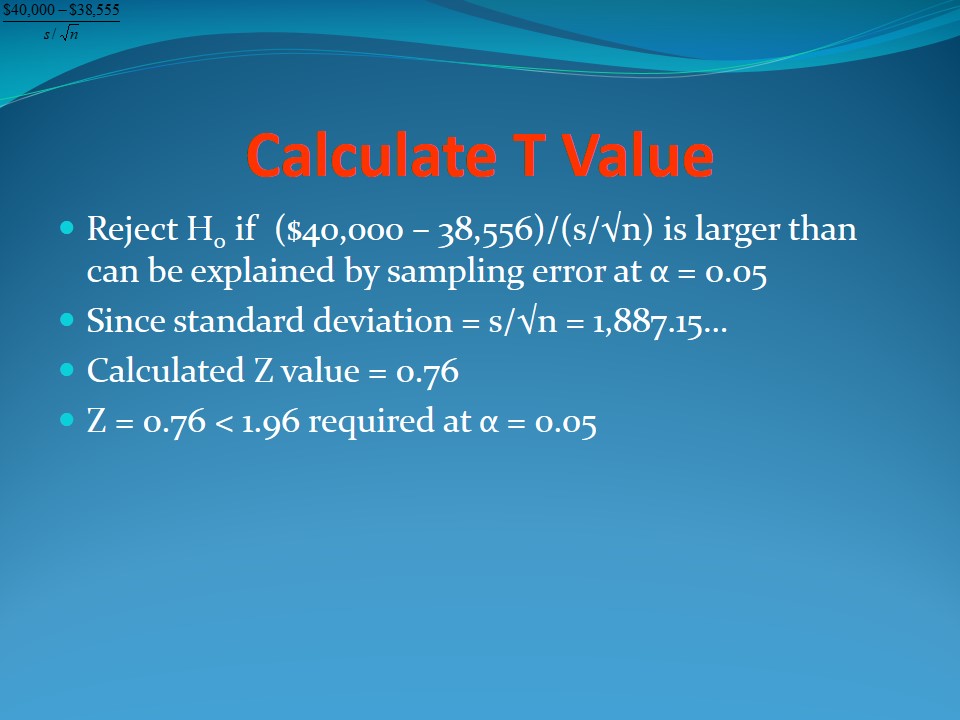
The Hypothesis Test: Conclusion
- Asking the question as to whether D&Y pays lower than the industry average
- Means posing a one-tailed t test in the positive direction
- The result of 1.69 for tCRIT and p < 0.0001 means that tOBS is at least one standard deviation lower than tCRIT, that such a large (negative) difference vis-à-vis μ, the population mean, could not have occurred by chance at α = 0.05.
- We reject the null hypothesis and draw the conclusion that D&Y really does pay its Systems Analysts who leave before three years are up less than the industry norm.

Recommendations
This preliminary statistical analysis suggests that wages below the industry standard do not materially explain turnover among D&Y Systems Analysts.
Lack of loyalty is more likely explained by leadership, recognition and self-esteem, team factors, career paths, and the organizational climate as a whole.
Obviously, D&Y would do well to address these other factors if it wishes to come to grips with employee turnover rate.
At the end of the day, equity and the effect of mediocre pay on self-esteem mean D&Y also needs to address the pay gap anyway.
